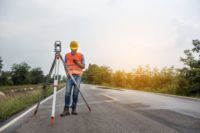For more than 50 years and across as many states, OSHA has protected workers from all industries in the US. They do this through their roughly 2,000 safety inspectors who make sure that employers are following the safety legislation, standards and regulations for not only their entire workforce, but their lone worker in particular.
As you’ll see below, not only do employers and companies have a moral obligation to protect their workers and employees, but they also have a legal one. Under the Occupational Health and Safety Act of 1970, regulations regarding lone worker safety have been predominantly guided by two core standards.
Lone worker legislation in the United States
Unlike our Canadian neighbors to the north, the United States does not have federal, country-wide legislation to protect the safety of their lone workers. Instead, these people are protected by different legislation and regulations that vary from industry and state.
OSHA 1915.84: Working alone
1915.84(a) Except as provided in § 1915.51(c)(3) of this part, whenever an employee is working alone, such as in a confined space or isolated location, the employer shall account for each employee:
1915.84(a)(1) Throughout each work shift at regular intervals appropriate to the job assignment to ensure the employee’s safety and health; and
1915.84(a)(2) At the end of the job assignment or at the end of the work shift, whichever occurs first.
1915.84(b) The employer shall account for each employee by sight or verbal communication, maintaining lone worker safety is an important employer responsibility to properly protect lone workers, organizational leadership must consider OSHA regulations, lone worker safety best practices, and employee needs and expectations.
It is important to point out that safety standard 1915.84 Working alone. is for shipyard employment, however it is very applicable to improving lone worker safety in all sectors. This standard requires employers to ensure lone workers can be accounted for through visual or verbal communication, which includes automated check-ins and any other means to confirm their safety and well-being. This type of communication can be automated or manual check-in, depending on your safety circumstances and needs.
OSHA Section 5(a)(1): General Duty Clause
(a) Each employer —
• (1) shall furnish to each of his employee’s employment and a place of employment which are free from recognized hazards that are causing or are likely to cause death or serious physical harm to his employees;
• (2) shall comply with occupational safety and health standards promulgated under this Act.
(b) Each employee shall comply with occupational safety and health standards and all rules, regulations, and orders issued pursuant to this Act which are applicable to his own actions and conduct.
The General Duty Clause under the OSH Act requires employers to provide safe work environments that do not present any dangerous work safety hazards. In order to determine if the work environment has any occupational safety hazards and risks, perform regular hazards assessments of the area as well as circumstances.
Lone Worker Legislation & Policy in Washington State
As we said earlier, US safety legislation and regulations can differ from each state.
Leading the way in 2020, Washington State passed RCW 49.60.515: Sexual harassment and assault policy—Adoption of by hotel, motel, retail, or security guard entity, or property services contractors—Requirements. This legislation protects the mentioned workers from sexual harassment and assault, as well requires the employer to provide an emergency panic button.
A year later in 2021, the Washington State Department of Labor and Industries released “Working Alone Safely: Controlling the Risks of Solitary Work,” which covers their recommendations on a range of important lone worker-related areas such as safety regulations, safety training, as well as emergency response.
Lone Worker Legislation & Policy in California
In California, the government passed Title 8, Section 3395, California Code of Regulation: Heat-Illness Prevention in Outdoor Places of Employment, which protects people working in the heat through training requirements as well as provision of water stations and shaded break/rest areas. There is reference to lone workers in section f where it is stated:
“Ensuring that effective communication by voice, observation, or electronic means is maintained so that employees at the work site can contact a supervisor or emergency medical services when necessary. An electronic device, such as a cell phone or text messaging device, may be used for this purpose only if reception in the area is reliable. If an electronic device will not furnish reliable communication in the work area, the employer will ensure a means of summoning emergency medical services.”
H.R.1195 - Workplace Violence Prevention for Health Care and Social Service Workers Act
As a result of increasing assaults of US healthcare workers and social service workers, Congress passed H.R.1195 - Workplace Violence Prevention for Health Care and Social Service Workers Act in 2021, which requires the Department of Labor to address these assaults and violence within healthcare, social services, and related sectors.
Working alone in hotels – Panic Button Legislation
In addition to Washington State, a growing number of districts and states are requiring hotel and hospitality employers to provide panic buttons to their lone working staff. The first was New Jersey state in 2019, with Illinois following their lead and then several US cities including Oakland, Miami Beach, Seattle, Chicago, Santa Monica, and Sacramento passing similar panic button mandates.
Duty of care
In addition to OSHA safety regulations, employers must also be morally responsible and practice duty of care, which, according to the Oxford Dictionary, means, “a moral or legal responsibility not to allow someone to be harmed.” In this case, we are obviously referring to lone workers and duty of care means going the extra mile to provide a safe work environment for their vulnerable team members; even when working outdoors.
When it comes to duty of care, it will vary from organization to organization and team to team. Look at each of the safety hazards identified in your hazard-risk assessments and exhaustively explore strategies to mitigate these hazards and risks.
Growing issue
In addition to the OSHA regulations, we are beginning to see a growing number of industries that are addressing the specific issue of lone worker safety. For example, the hotel and hospitality industry addressed the very serious issue of violence and assault with their staff, and a number of jurisdictions have passed laws required panic buttons be provided for at-risk staff.
Additionally, lone worker safety is being prioritized on other industries that require solitary work such agriculture, healthcare and utilities. These sectors present their own unique safety hazards to lone workers and they must be assessed and mitigated promptly and properly.
Educate and communicate
While it is unnecessary for every employee to have this legislation memorized, it is important to communicate how the legislation impacts their job and benefits their safety. Strict rules and regulations can be tough to implement and practice, however when the team is educated about the benefits, they will be more willing to get on board. Provide the legislation in an accessible place (preferably online) as well as updated information about why it matters to that particular company and work.
Safer and happier
Remember, this legislation can be used as a structure for your safety protocols and program. Look at the health and safety needs of your team and immediately look at ways to address those issues.
Prompt action is important. Taking safety legislation and practicing duty of care not only demonstrates that the employer is compliant with local law, but that they care about their employees and lone workers. When employees feel cared for, they are usually happier and perform better work, resulting in a number of long-lasting benefits on multiple levels. Look at the legislation in comparison with your safety hazards, and develop strong safety strategies that will improve the safety – and happiness – of your team.




